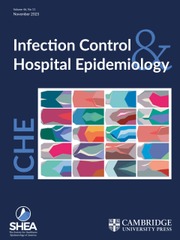Article contents
Brief Report: Needle Punctures—Documentation and Incidence Rate Calculation
Published online by Cambridge University Press: 02 January 2015
Extract
Potential hazards of puncture wounds have been well-defined and include transmission of hepatitis B virus, acquired immunodeficiency syndrome, syphilis, malaria, and other infectious diseases. Yet, standard methodology has not been used for statistical comparison. Attack rates have been expressed as needlesticks per full-time equivalents, needlesticks per employee per year, punctures per number of personnel, or punctures per number of hospital beds. These calculations do not account for the amount of time during which an employee is at risk of receiving a needle puncture. Also, numbers alone cannot account for intensity of care, potential exposures, or hours at risk. Nor can numbers provide an estimate of potential risk. A rate is more valuable than numbers because it measures the probability of occurrence. A meaningful incidence rate would be based on uniform data collection and would provide the number of puncture wounds per year for a standardized work period. This is similar in concept to nosocomial infections per patient-days of exposure. We propose the application of standard labor statistics methodology which accounts for man-hours worked, can be readily obtained in health care facilities, and can be modified as described here.
Information
- Type
- Original Articles
- Information
- Copyright
- Copyright © The Society for Healthcare Epidemiology of America 1985
References
- 2
- Cited by

